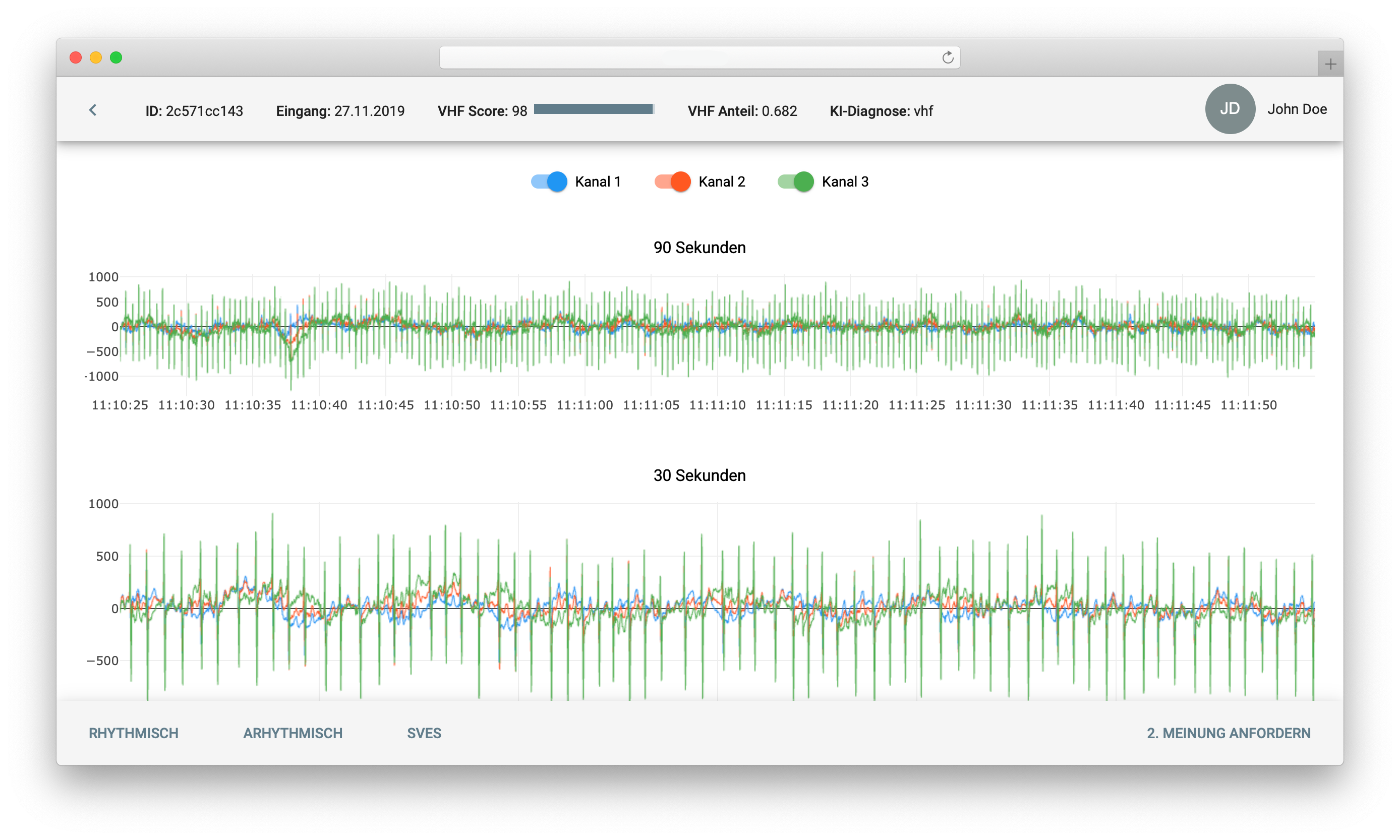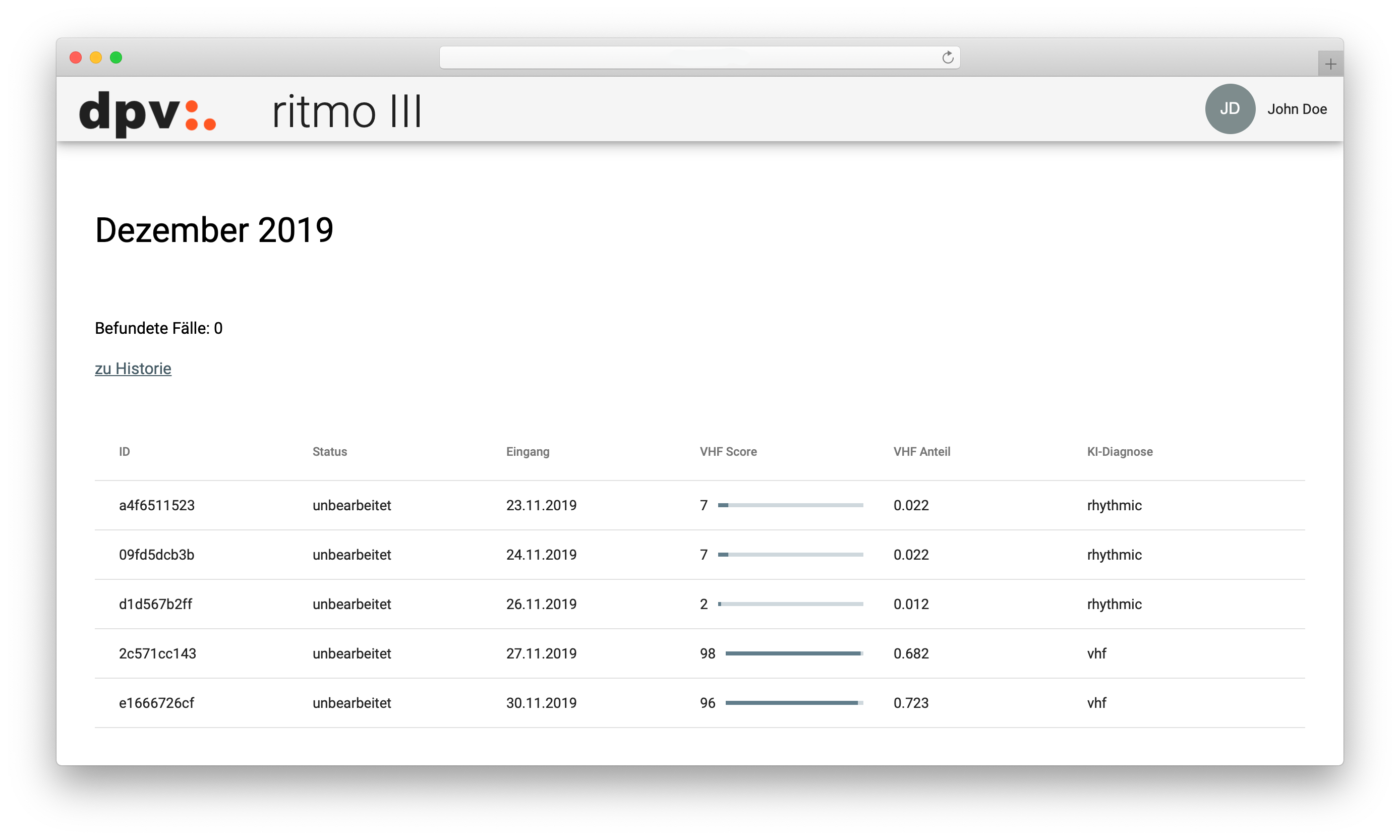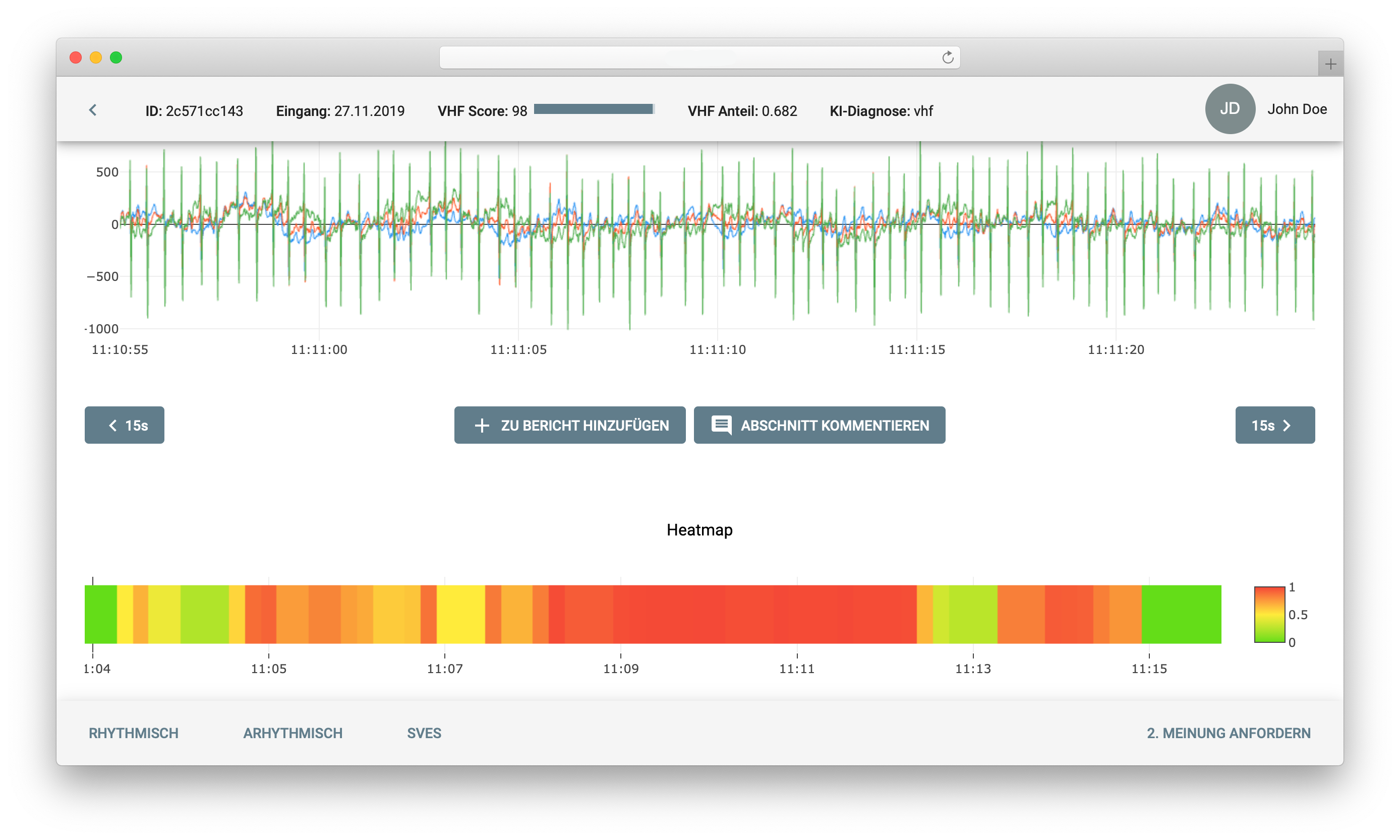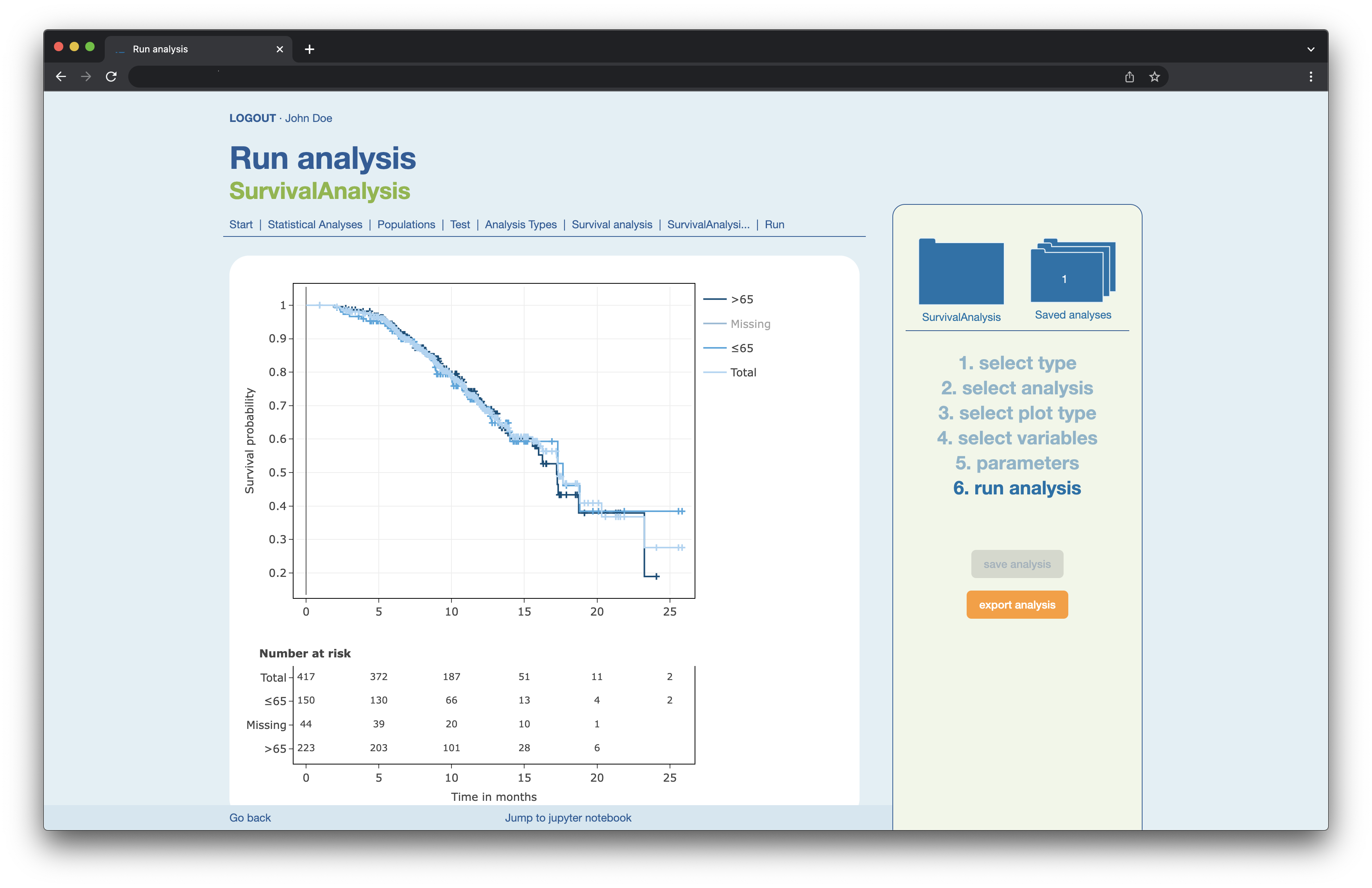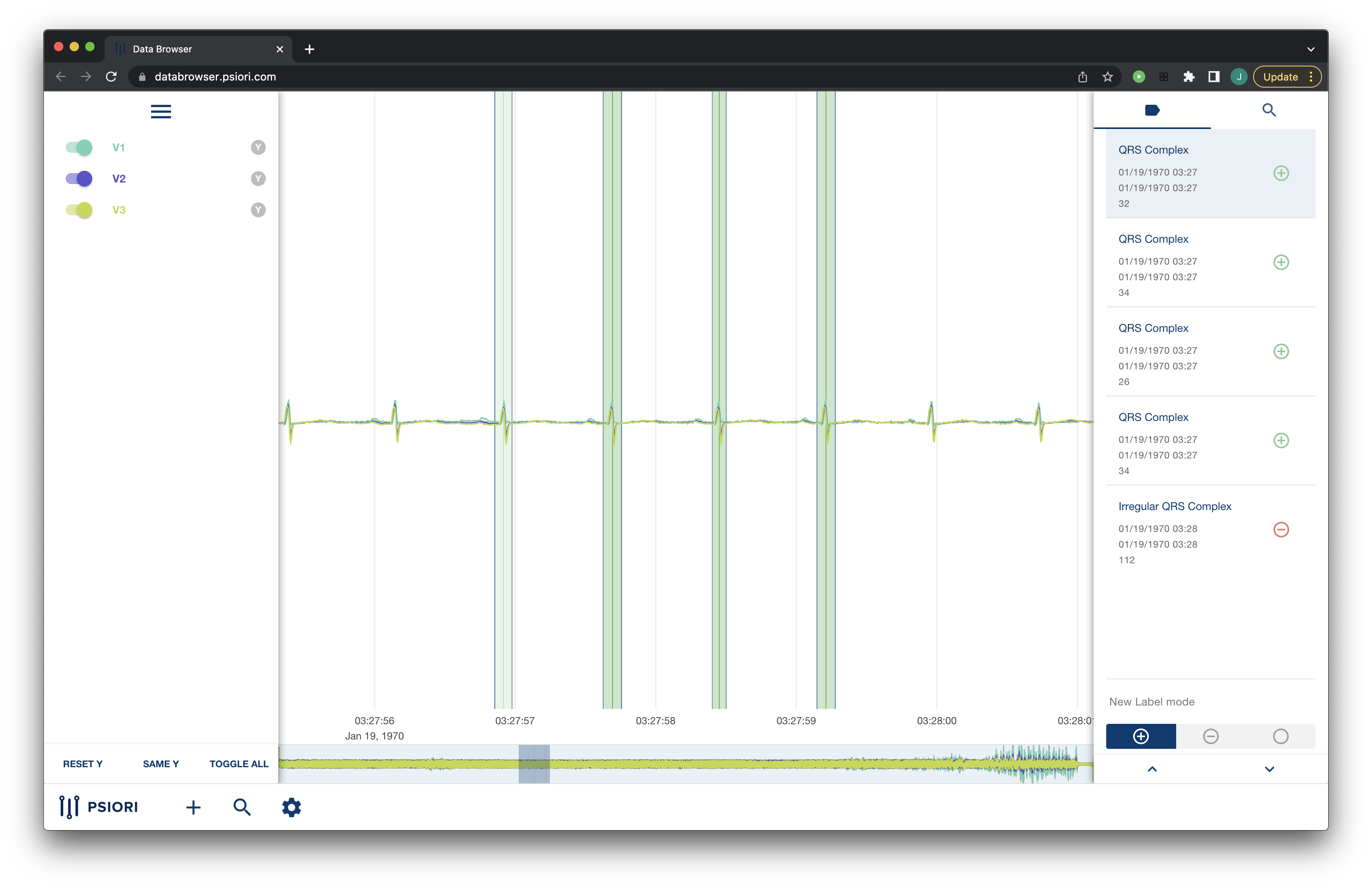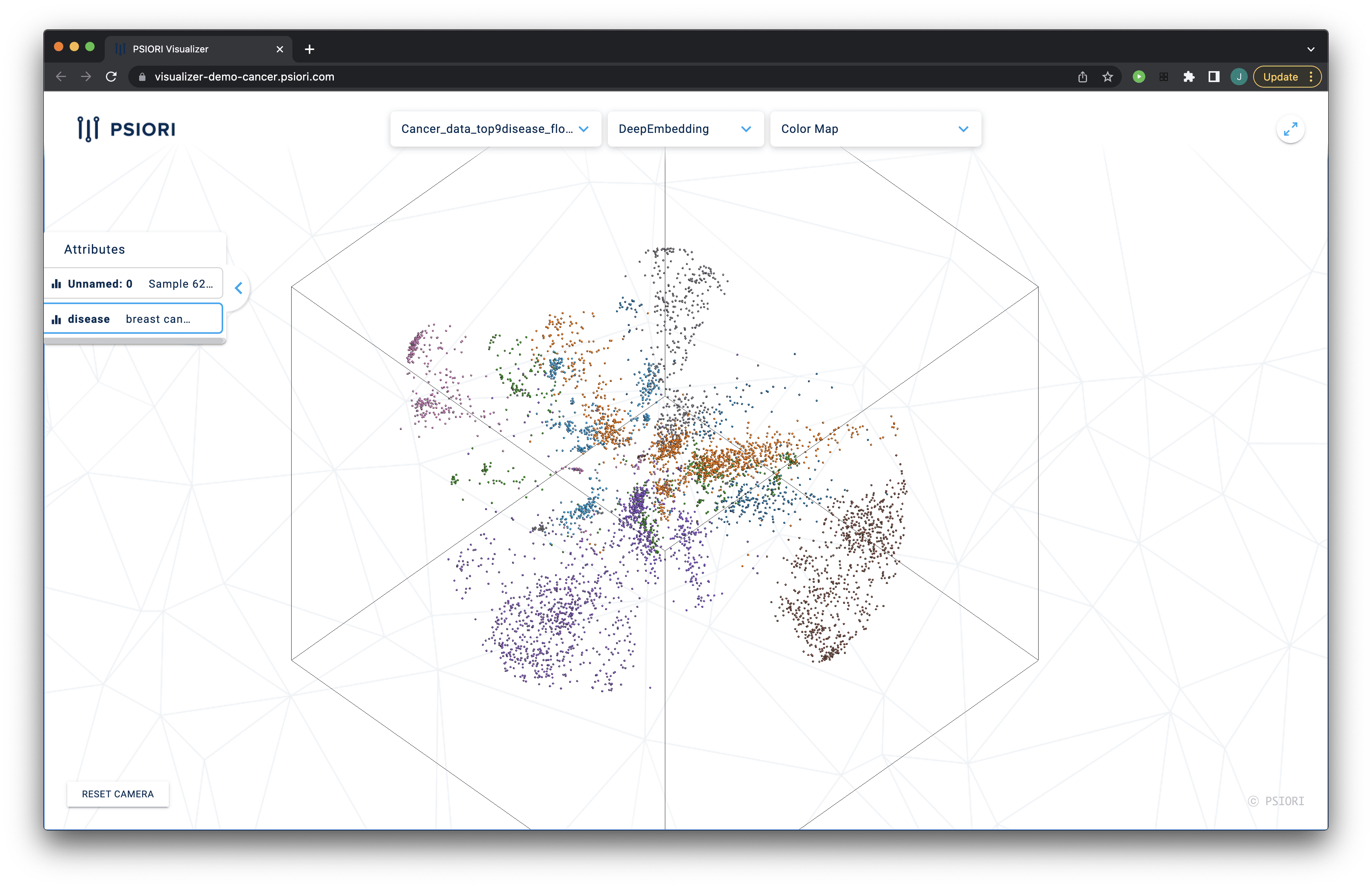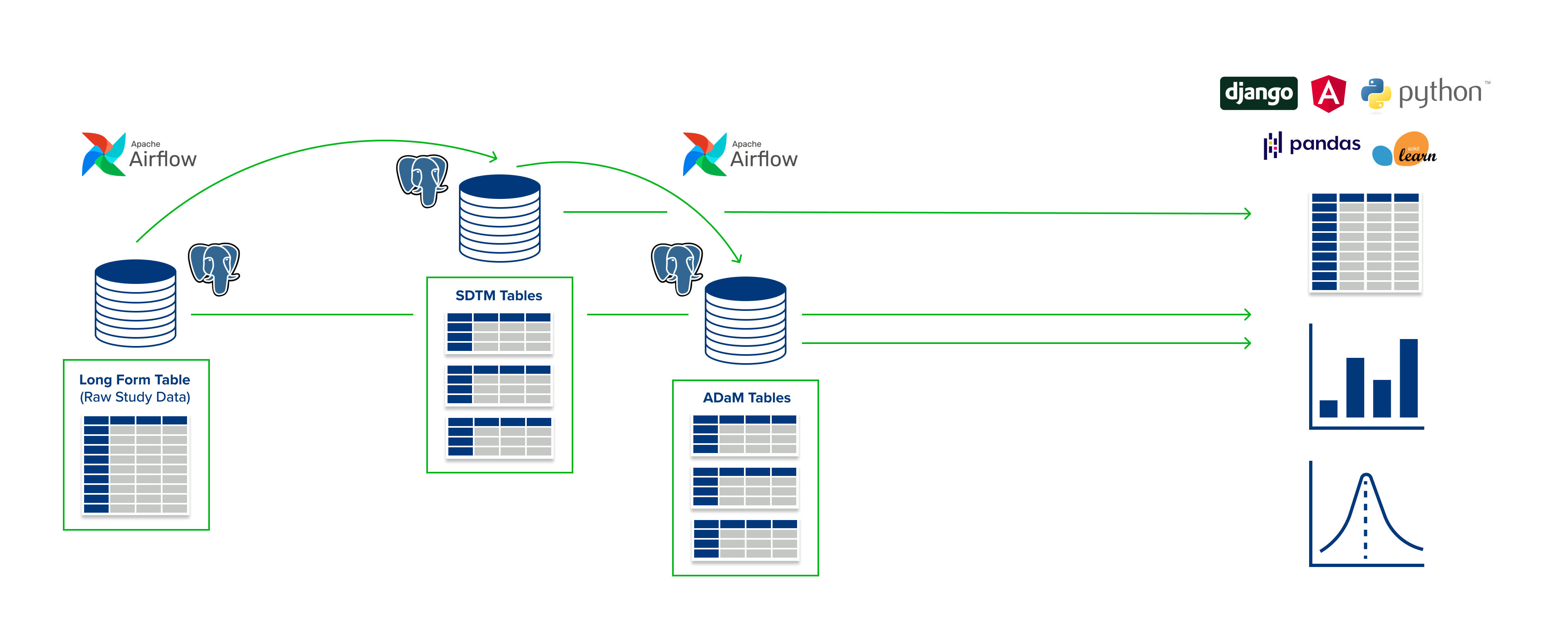Integrating Artificial Intelligence and Deep Learning in the Medical Environment
How can artificial intelligence improve healthcare?
Medicine is based on data and information - doctors issue diagnoses on the basis of examination results and laboratory values. New drugs are approved on the basis of test series and studies. Together with our partners, we are developing artificial intelligence models that can illustrate complex and extensive amounts of data, individualize therapy approaches, make pharmaceutical research and documentation more efficient and simplify clinical documentation.
Medical data is mostly sensitive and personal, which is why it is processed exclusively by physicians. Our models enable appropriate handling: PSIORI's CDISC pipeline, for example, is designed to operate in the customer's own infrastructure, meaning that the data does not leave this infrastructure.
Artificial intelligence can also be part of certified medical devices: for one partner, we were able to develop a model to support the fast and effective evaluation of long-term ECGs. This product, including th e AI, is certified as a medical device and received the German Medical Award.
Examples:
Detection of non-viable cells for Single-Cell-Printing
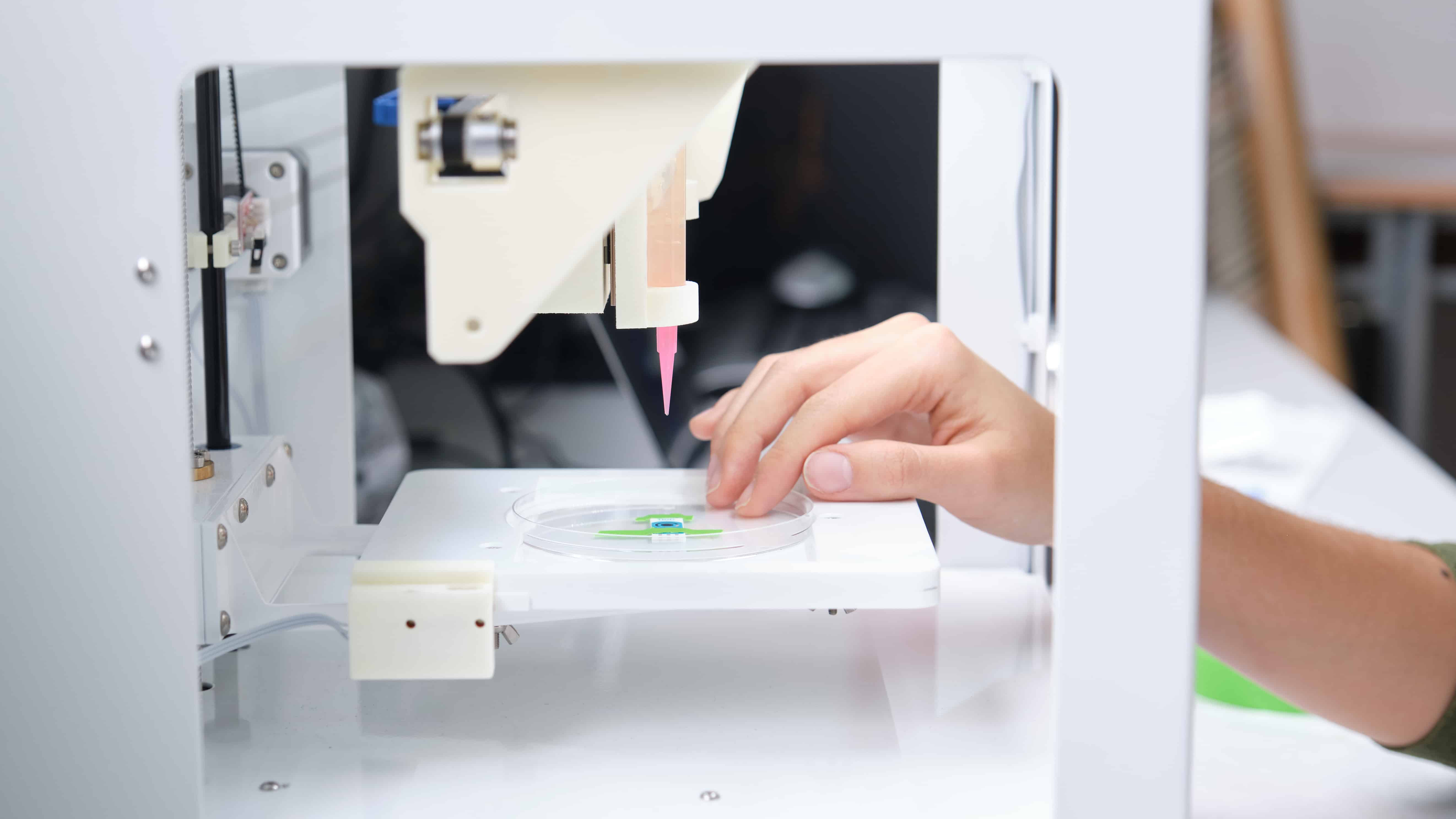
Cell cultures are needed for many procedures in pharmaceutical and medical research. One method to generate cell cultures is the so-called “Single-Cell-Printer”. An issue with this method are the non-viable cells, because cell cultures based on those cells will not grow. The previous procedure is time consuming and single cells need to be checked manually. PSIORI has developed a Deep Learning method that classifies cells as viable or non-viable at a detection rate of 99%. This detection rate renders manual checking obsolete.
PSIORI’s model for automated classification of cells is based on deep neural networks for image classification. It additionally uses some methods from classic computer vision. The model classifies cells based on microscopic images from the Single-Cell-Printer.
Our model recognizes non-viable cells by evaluating image information. Deep neural networks are especially suited to this kind of task as they are able to learn precise classification features through small differences in images. To facilitate this task for the neural network the images are preprocessed by methods of classical computer vision.
Classification of PCR curves
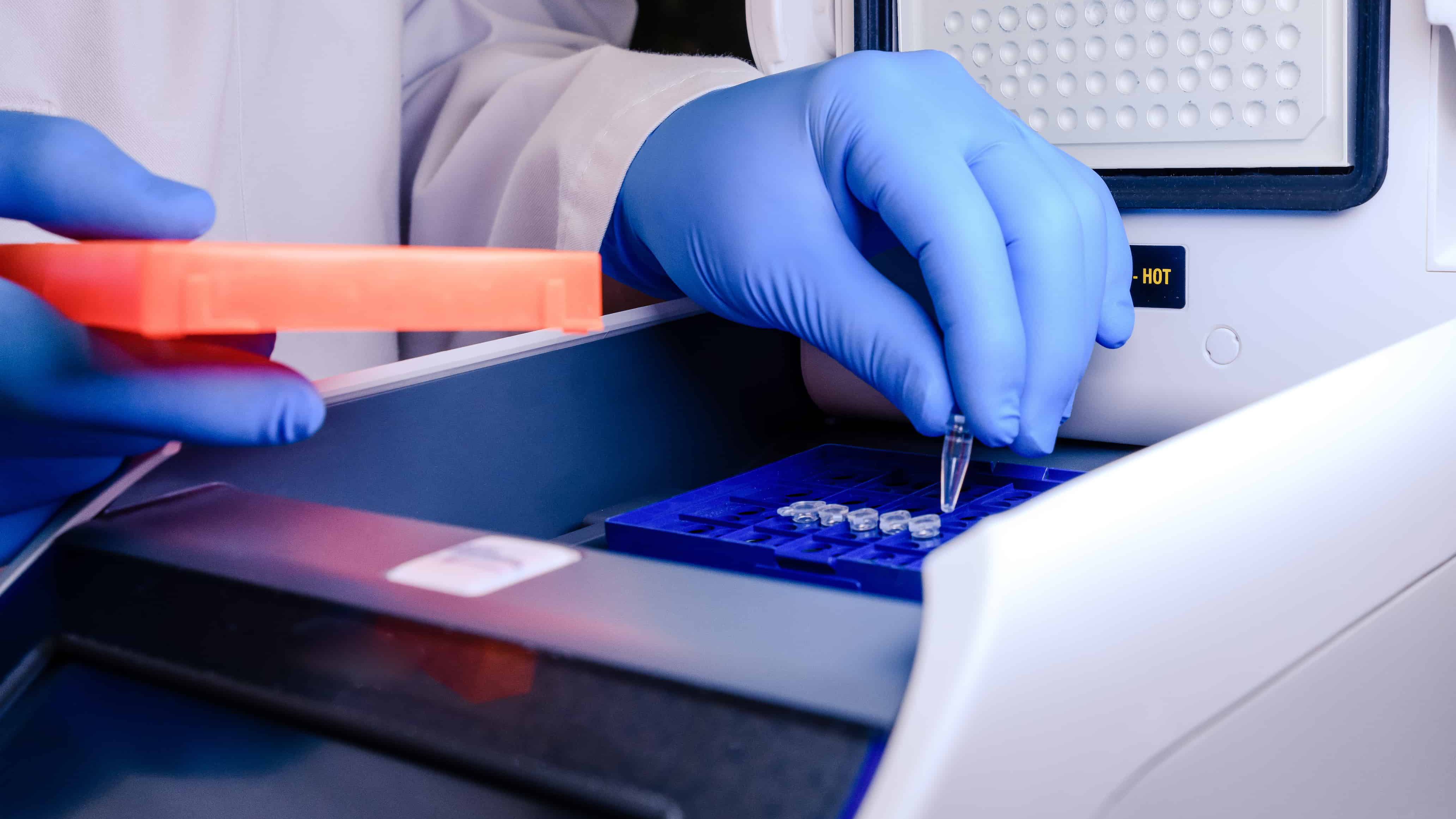
PCR tests are the most reliable method for detecting viral RNA in the human body with an analytical specificity of almost 100%. The current Covid-19 pandemic introduced PCR testing to the general public, though they are used for the detection of many different virus infections as well, for example HIV or influenza. The evaluation of the PCR test happens generally in automated laboratory software. These models are adapted to the individual assays for the detection of different viruses. PSIORI has developed a Deep Learning method that aims to reduce the effort needed to adjust the model to another assay.
A deep neural network classifies individual PCR curves. The network learns the typical form of exponential rise as a positive and can recognize its variations. The PSIORI model classifies curves into positive or negative but can distinguish examples with high uncertainty into their own class. In practice these cases would be given to a human processor to decide. The model achieves results comparable to state-of-the-art solutions after training on a low five digit number of PCR curves without being fine tuned and can be adjusted to new assays through simple retraining.
The model is based on PSIORI-STaR, a specific architecture of deep neural networks for processing multivariate time series. Since the deep neural network does not only learn the characteristic global form of a positive or negative curve, but also local features, a simple retraining on little data should be enough to transfer it to a new assay.
Automatic detection of atrial fibrillation

Atrial fibrillation is a common cause for stroke. To recognize atrial fibrillation, long term ECGs have to be evaluated extensively by specialists. PSIORI has developed a software with a deep learning model that detects atrial fibrillation automatically. Thereby the evaluation of long term ECGs is shortened down to a few minutes. The software is certified as a medical device.
The deep learning model is trained on thousands of ECGs. It detects time intervals that might contain atrial fibrillation. The software presents those to the cardiologist for evaluation. Our model works on 3-channel-ECGs as recorded by small devices that can be worn in everyday life. The model is tuned to not produce any false negatives and present any potentially suspect time intervals to the doctor.
The model is based on PSIORI-STaR, a specific architecture of deep neural networks for processing multivariate time series. It jointly analyzes the three channels of the ECG and is therefore robust against small irregularities produced by, for example, not attaching the device tight enough while wearing.
Cancer Registry Database

Cancer is the most common cause of death worldwide. The more complete data on the course of a disease can be recorded, the more specific the therapy approaches become. PSIORI has developed a data model for a cancer registry that, from the beginning of the process, aims to enable the evaluation of the stored data in terms of individualized treatment approaches.
The cancer registry database is designed with a focus on data-based evaluation. Visualizations and data analysis can easily be built on top of it. The technology is based on the Ruby on Rails framework.
Data Science Tool for Clinical Studies and Registries

Data collected in studies and registries is evaluated at regular intervals by statisticians, who apply their scripts to it. However, manual processing is costly and time-consuming. PSIORI has developed a Data Science Tool with a user-friendly interface, with which standard analyses can be graphically compiled and saved. The tool allows an easy creation of project evaluations and can be used by project participants with or without a technical or statistical background.
The data is pulled from a data warehouse that can contain data from several studies and registers. Based on this, the backend of the data science tool does not store data. It instead stores filter and calculation rules for populations along with configurations of predefined analyses.
The tool enables various standard analyses as well as the creation of tables and specific analyses such as time-to-event analyses and Cox regressions. For approaches not included in the standard analyses, the tool provides a Jupyter notebook server with R and Python connected to the backend and data warehouse databases.
Simplify clinical documentation

Clinical documentation takes time and requires specially trained staff. In order to receive the fees for the provided treatment and material, a clinic must ensure that all corresponding ICD codes are well documented and reported in the case files. PSIORI has developed software models that suggest codes that are probably missing and that finds evidence for already documented codes in case files.
Missing ICD codes can be suggested directly from the §21 data of the case. A probabilistic model learns the correlation of different principal and secondary diagnoses on a larger data set and suggests such codes that occur very frequently together, if missing. Other models use existing laboratory findings to suggest ICD codes directly from the findings in the form of an expert system. The expert system works on the basis of the knowledge of experienced documenters. Another model links laboratory findings to §21 data in a deep-learning model and infers likely missing codes from the resulting embedding. A probabilistic NLP model additionally finds evidence for documented codes in texts.
The overall model is designed to provide assistance to a human documenter and to speed up the documentation process.
Psiori-Health Tools
Tools that drive health AI

PSIORI Data Browser - Efficiently Visualize and Search Time Series
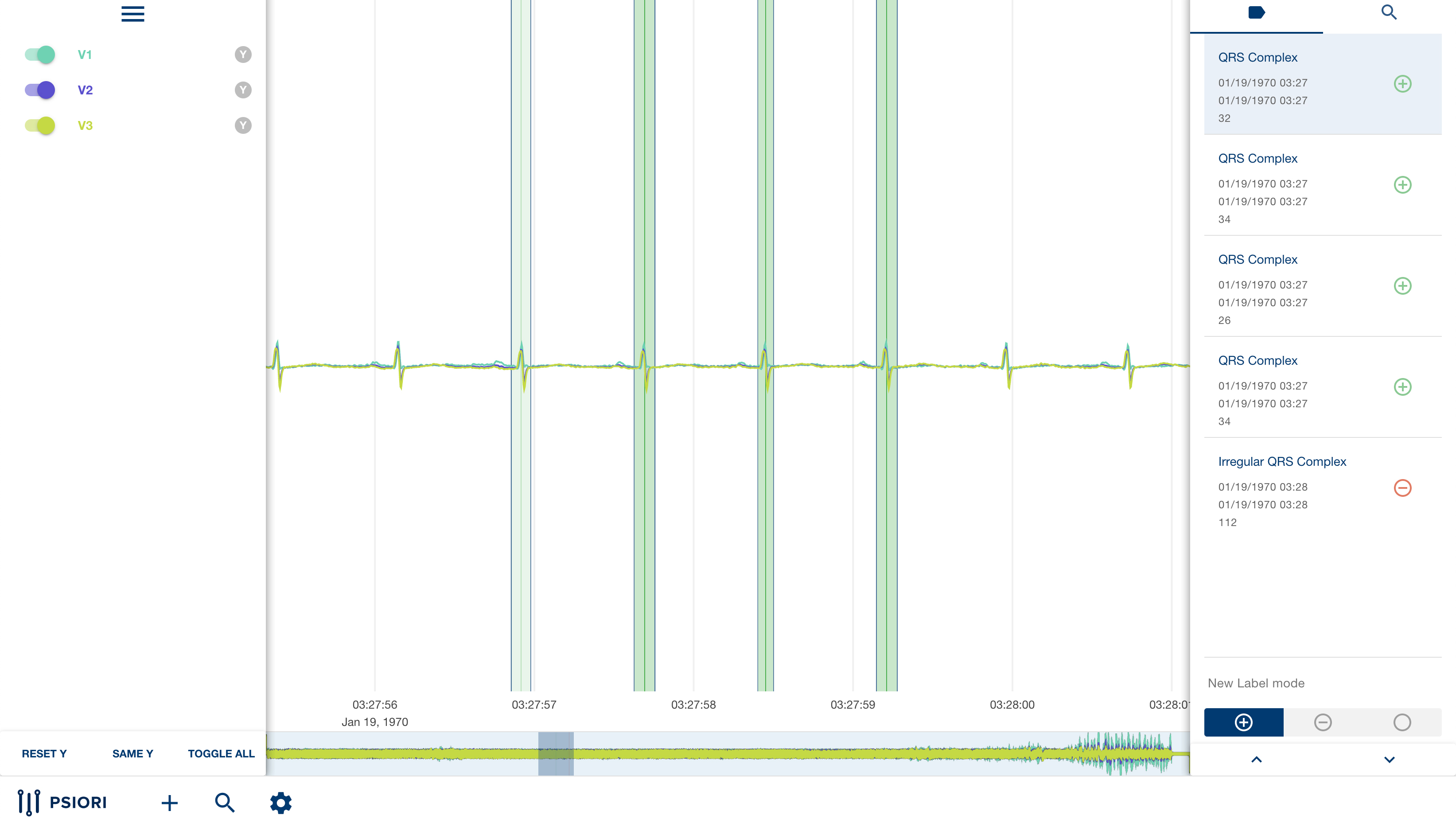
PSIORI Data Browser is a tool for easy visualization and annotation of multivariate time series. In the medical field, examples of such data would be ECG and EEG recordings.
PSIORI Data Browser allows users to visualize time series, select the corresponding channels, and adjust the scales of the channels. The tool enables zooming into the data, making it possible to select the resolution and (temporal) length of the section being viewed. It is possible to scroll through the entire data set.
In addition, the Data Browser allows searching for similar sections in the time series. For this purpose, a section of interest (at any zoom level) is marked by mouse click. A deep neural network learns to find similar sections based on the example that has been marked. Negative examples can also be marked - sections that are not meant to be part of the selection. The markers allow for jumping from one section to the next, they can be labeled and saved.
The illustration shows the use of the Data Browser on a multi-channel ECG recording (3-lead ECG). The section covers approximately 2 minutes of a 72 hour recording. The list at the bottom of the screen shows the length and position of the displayed section in the overall data set. A QRS complex has been selected and all QRS complexes in the recording have been highlighted.
Visualizer - Visualizing Large Data Sets
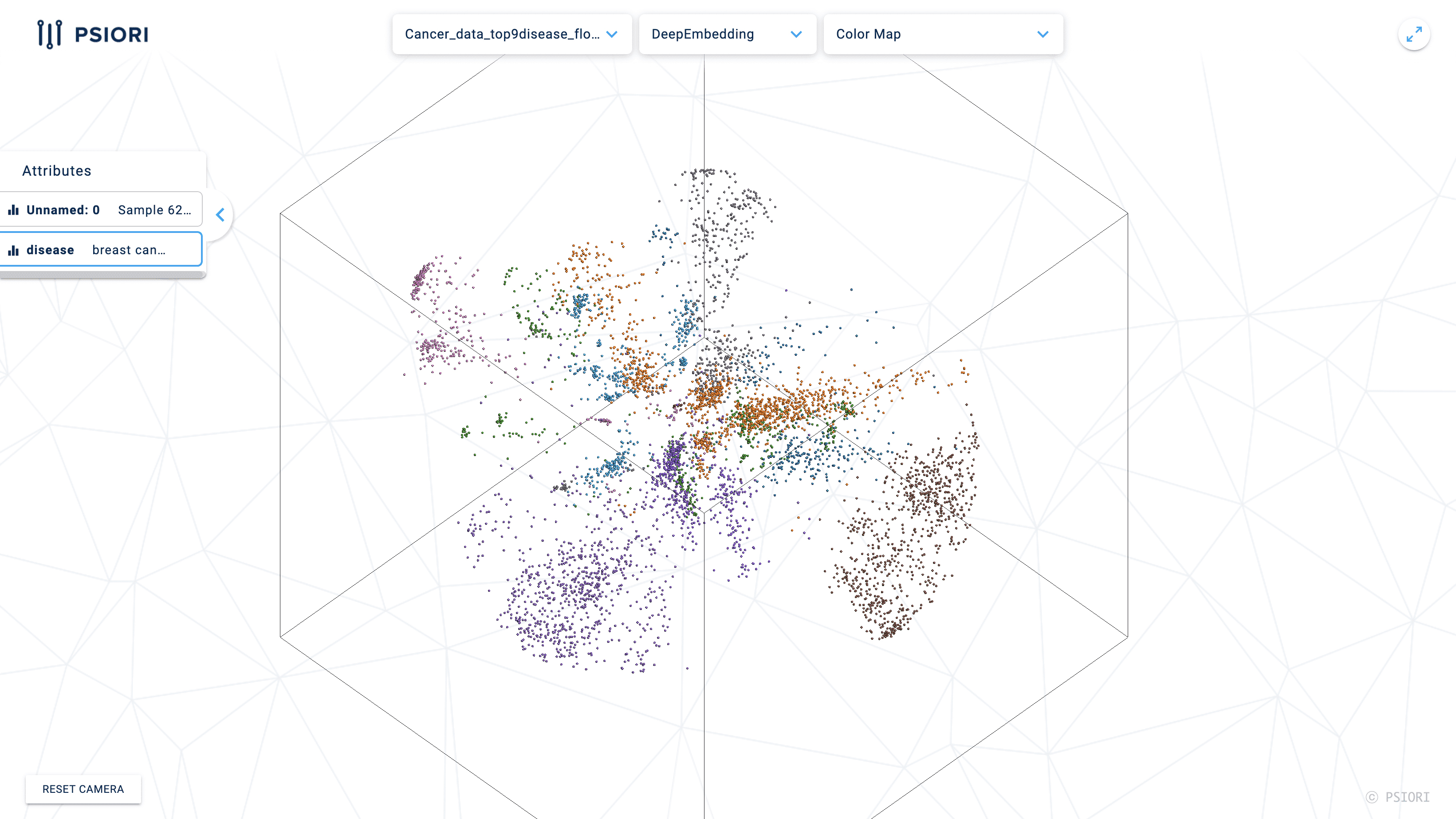
The PSIORI Visualizer reveals structures in large and complex data sets. In doing so, a deep neural network learns the most important structural features of a data set and maps them in a three-dimensional space. An example of such datasets are gene expressions of cells, such as those mapped in cancer datasets.
The excerpt shown here depicts the embedding of a dataset consisting of 500 different cells that are described by 60,000 gene expressions. The Visualizer can display over 1.5 million data points simultaneously and represent them as a point cloud. For enhanced pattern recognition, the points can be colored according to their properties and visually delineated from each other. In order to get the most accurate analysis of the data, the display can be rotated and even zoomed in to individual data points.
CDISC Pipeline - Big Data Technology for Medical Studies and Registries

The PSIORI CDISC Pipeline provides medical study and registry data in a CDISC-compliant data structure on a daily basis.. The pipeline builds on established Big Data technologies and transfers them to the field of medical studies and registries. It can be operated both on premise and in various cloud environments, is built entirely on open source libraries, and requires no additional licenses.
Data from EDC systems can be merged with other data. SDTM and ADaM files as defined by the user are automatically generated on a daily basis. The data remains available for any past daily status, which makes all analyses reproducible at any time.
To simplify the definition of SDTM and ADaM files, PSIORI has developed a Domain Specific Language (DSL) based on YAML. Existing codes (MedDra or similar) can be integrated directly into the definition of the SDTM and ADaM files. The definition of SDTM and ADaM files for the pipeline is done by default in this DSL and also supports the integration of existing definitions.
